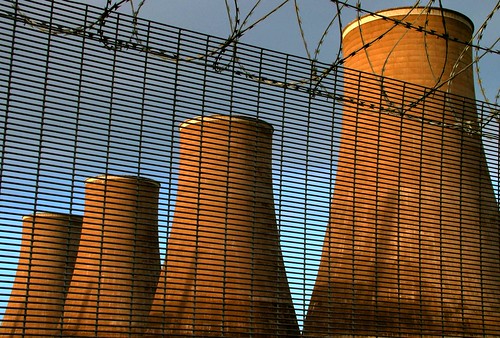
Photo Credit geognerd
Having just taken delivery today of my Toyota Prius and having just read the Rocky Mountain Institute’s (RMI) fabulous report on Vehicle to Grid possibilities, I decided it was time to address a post to this topic.
First off, what is vehicle to grid? Vehicle to Grid (or V2G) is the idea that plug-in hybrid vehicles (PHEVs) could be used to help stabilise electrical grids by consuming power when there is an excess of electricity, and selling electricity back to the grid when electricity is scarce.
The supply of electricity is variable. All the moreso as the concentration of renewable sources added to grid increases. When this variability of supply is combined with the constant variability of demand the result is an extremely unstable grid and the occasional resultant power outage. This instability increases with the addition of more renewable sources (wind and solar).
Early on summer mornings (2am to 6am) is the typical trough of demand for electricity. As more and more wind farms are added to the grid, if there is a steady wind blowing at this time, there is a very real possibility that the amount of energy being supplied by wind farms will exceed the demand! With an excess of demand over supply the price for electricity will go extremely low or even negative to stimulate demand. At this time, if there are a large number of PHEVs connected to the grid, they can pull down the excess power and store it. In other words, they start to act like a giant distributed battery bank for the country.
The following day, if there is little wind and the temperature is high (not unusual in summer) the supply of electricity will be low and the demand for power will be high as people turn on their air conditioning units. With low supply and high demand, electricity will now be quite expensive. At this time, it would make economic sense for PHEV owners to sell the electricity stored in their vehicles back to the grid.
Furthermore, as the RMI report put it:
Utilities sell a disproportional amount of their power on hot summer afternoons. At night, business plummets. For the utility, that means their expensive generation and transmission equipment stands idle. “Night-charging” vehicles, therefore, could be a lucrative twist on the business of selling electrons.
The National Renewable Energy Laboratory recently estimated that if half the nation’s light vehicles were ordinary plug-in hybrids they would represent a night-charging market of 230 gigawatts. That’s good news for the U.S. wind industry. In many areas, wind tends to blow harder at night, creating more energy when the vehicles would be charging.
All this requires the implementation of smart grids by utilities. These grids will be able to signal the cost of electricity (reflecting the supply and demand) in real-time and devices (vehicles, air-conditioning units, diesel generators, refrigeration plants) will respond to the price fluctuations accordingly so that when electricity is expensive, the demand will drop and supply will be stimulated to increase.
Smart grid trials are already taking place with Enel in Italy having rolled out a smart grid to 27.2m Italian residences! In the US, Austin Energy has been working on building its smart grid since 2003 while Xcel Energy announced its plans to build the first fully integrated “Smart Grid City” in the nation in Boulder, Colorado.
To get this vision to become a reality, consumers will have to be incentivised to buy PHEVs. This might be done by governments, or by utilities who contract with the vehicle owner to subsidise the price of the car, for the use of the battery when needed!
Governments could help push this forward by mandating that all government owned vehicles be PHEVs (though the police might want a derogation until there are high performance PHEVs!).
Car manufacturers also need to produce PHEVs! Toyota will bring the first plug-in Prius to market in 2009 and Renault Nissan have committed to producing electric vehicles for Israel and Denmark. With oil now at $140 per barrel and not looking likely to drop significantly in the coming years, the number of people looking to buy PHEVs will only trend upwards.
Then there are the environmental benefits of large fleets of cars not emitting CO2 for large portions of their journeys. And the resultant grid stability would enable greater penetration of wind power, producing (typically) more power overnight, just when PHEVs would normally be recharging.
What about you? If you could by a plug-in hybrid which would help stabilise the grid, increase the penetration of renewables, and allow you to sell power back to the grid, would you?

